I was raised with a family tradition of eating black-eyed peas on New Year's Day to ensure good luck through the next year. I've kept the tradition alive myself, as a touchstone to my family history. It reminds me of relatives long since gone. And it helps me appreciate how they passed on, across generations, a sense of optimism for the future. Onward to good luck and a great 2017!
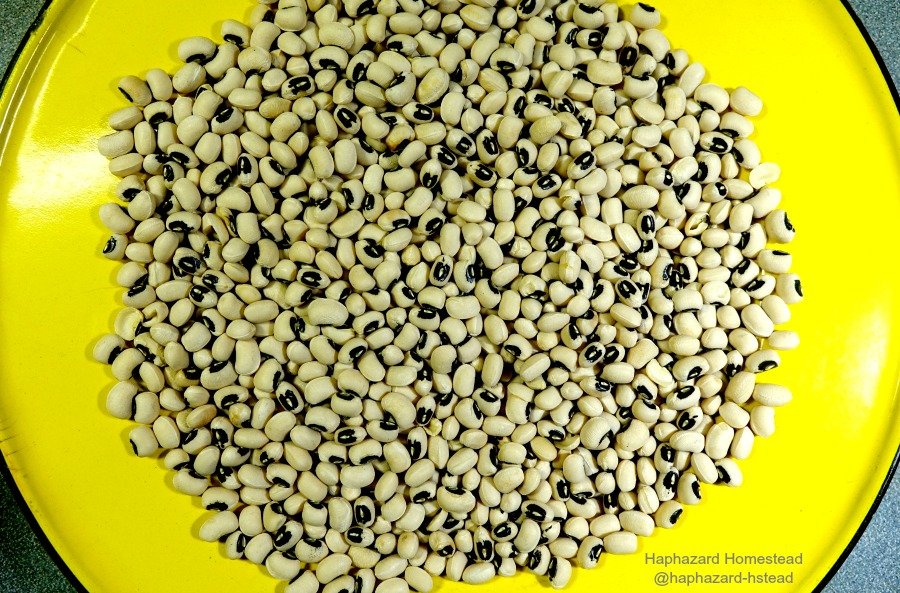
This year, I celebrated New Year's Day in the outdoors - participating in my local Audubon Christmas Bird Count. The specific day of the count varies every year from place to place. It was January 1 this year for our local Audubon group. For the last 8 years, I've been a team leader for one of the areas covered by the count.
My sister drives up from her town, 90 miles away, to be on my team every year. The weather is usually chilly and wet, so it's good to have a hearty lunch for our day of birding -- identifying and counting every bird we see from sunrise to sunset. Since the count was on New Year's Day this year and I was with my sister, I made Black-eyed Peas -- with weeds, of course!
Step 1. Pressure Cook the Black-eyed Peas
Like any legume, it's quicker to cook black-eyed peas in a pressure cooker. I never liked a pressure cooker until I learned - in an airline in-flight magazine, of all places! - about the difference between the common American pressure cooker and the style more commonly used in the rest of the world. So now I've got a good pressure cooker and use it a lot.
First, I check over my black-eyed peas, to make sure there's no rocks, dirt, or bad beans. Then I rinse them, and put them in the pressure cooker, covered with a couple inches of water. I was able to cook a pound of dry black-eyed peas in about 30 minutes. That's quick!
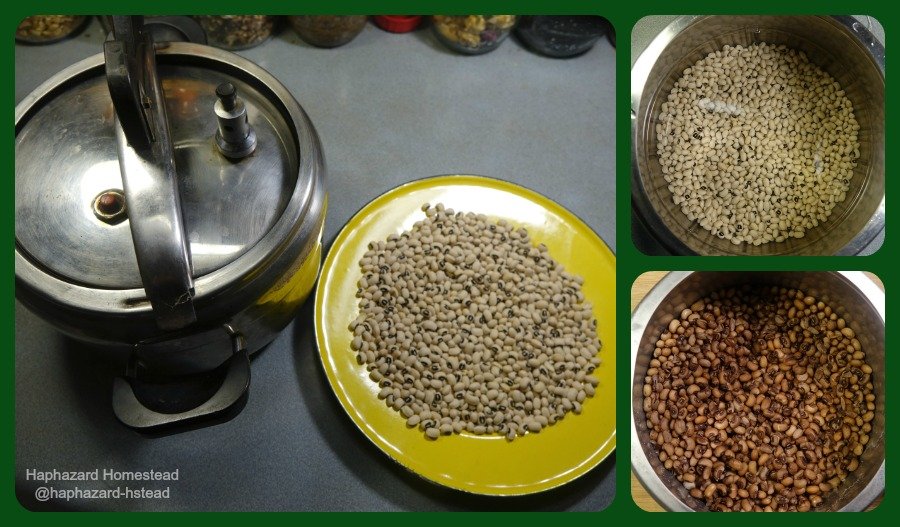
Step 2. Forage the Wild Field Mustard
While the black-eyed peas were on the stove, I went out to forage some wild field mustard. I wanted some substantial greens, so I didn't look for the tender young plants. Instead, I went for the big, older leaves. In December, they were covered with ice for 4 days straight and exposed to winter temperatures (18-19 F or -8 C).
But wild field mustard (Brassica rapa) is one tough plant! During the worst weather, the plants look a little limp. But they spring right back, even with temperatures right at freezing. Those leaves, and even the center stems, will cook down just fine, into tender and tasty greens. They are not at all spicy or bitter - more like a super powerful tasting spinach.
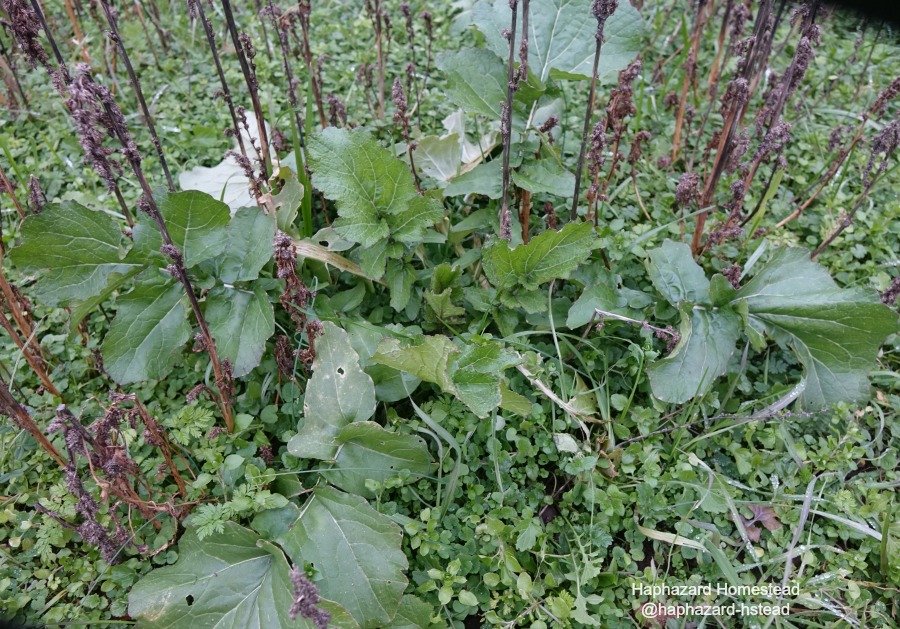
Step 3. Cook Everything
This is so easy to cook! There are only 4 ingredients: the black-eyed peas, wild field mustard, onions, and smoked Jalapeno peppers. And some water - that's it! The smoked Jalapenos are a powerful punch of smoky hotness, just right for warming up, without breaking a sweat.
The preparation is super easy. I just washed my field mustard and coarsely chopped it. And I chopped 2 onions.
I sauteed the onions with the smoked Jalapenos until the onions were translucent and starting to turn a golden brown. Then I added half of the black-eyed peas that I pressure cooked earlier. I covered it all with water and then topped that with the chopped field mustard. I put a lid on my cast iron skillet and let it all simmer until the mustard was wilted down, enough so I could stir it in. Then I let all that simmer for about 20 minutes. That's all there is to it!
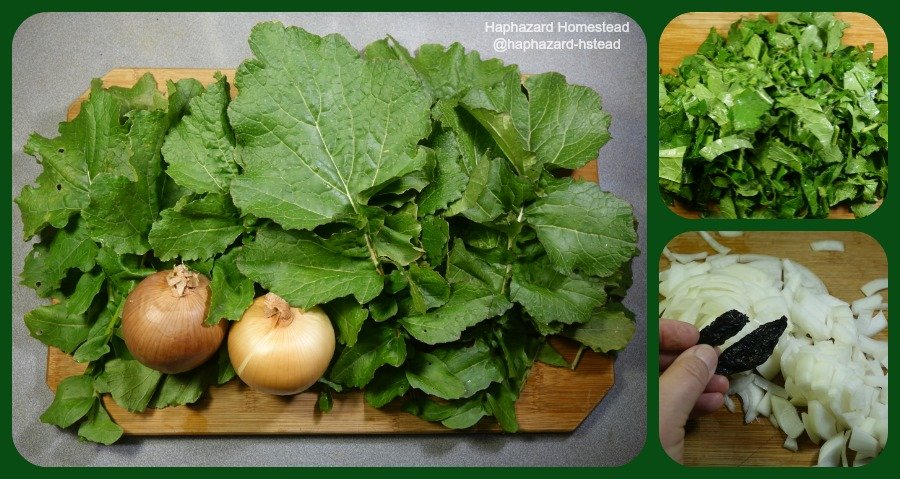
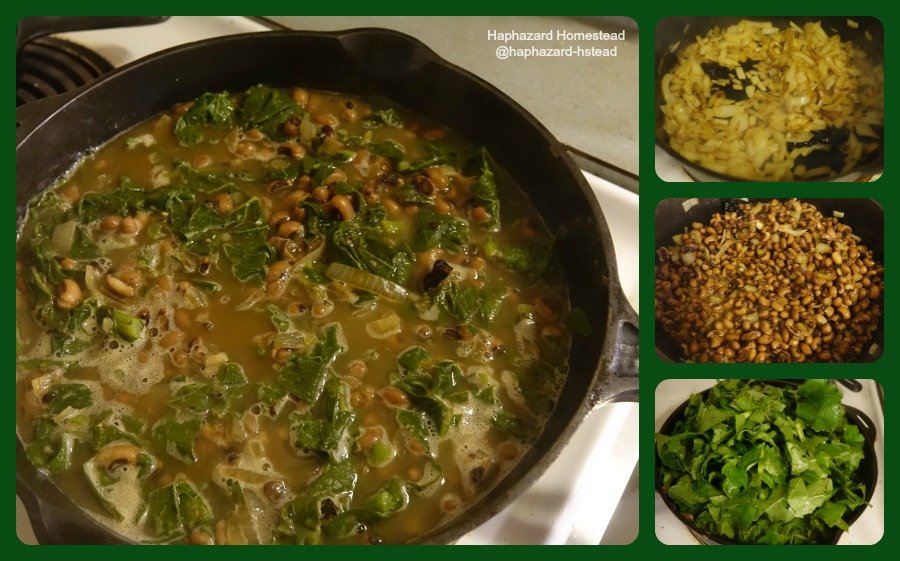
Step 4. Enjoy!
I pressure cooked the black-eyed peas and foraged the wild field mustard on December 31. In the morning, I cooked everything before dawn. I filled a Thermos vaccuum bottle for each person on our birding team. We watched birds all morning in the rain, sleet, and wet snowfall - that thankfully melted on ground contact, rather than freezing like our big ice storm in December. So it was nice to have a hot lunch during a break in the weather!
I had to warn folks to watch out for the Jalapeno peppers. You can see one in my bowl at the top. They are OK to eat if you like the heat, but a person ought to be ready for it. With a few disks of baked polenta and cranberry-cheddar cheese, this was a great lunch! Even though the day got colder as a front moved through, we kept on birding until sundown - thanks to the black-eyed peas!
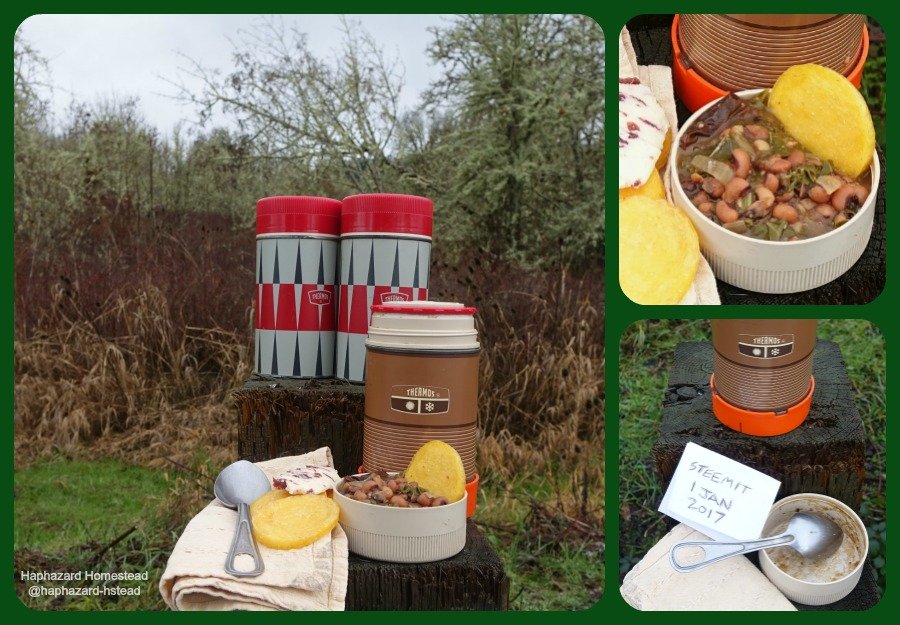
And we all think that those black-eyed peas brought us some good luck, too. We didn't see as many birds, or kinds of birds, as in past years, but we saw some good ones -- a Wilson's snipe, bald eagle, Peregrine falcon, western bluebirds, and plenty of others. I'll write a post about it soon. I hope that 2017 brings you plenty of luck too, even if you didn't eat any black-eyed peas! Happy New Year!
What Do You Think?
Does your family have any traditional New Year's Day food? Have you ever seen or eaten wild field mustard? Have you ever grown black-eyed peas in your garden?
I write about foraging because I believe that we can all have lives that are richer, more secure, more grounded, and more interesting by getting to know the plants and the land around us – in our yards, our parks, and our wilderness.
I would like Steemit to be the premier site for Foraging on the Internet! If you have any thoughts about foraging, or experiences to share, write a post and be sure to use the Foraging tag. And check out the @foraging-trail to see curated quality posts about foraging. Happy Foraging!
** Haphazard Homestead **
*** foraging, gardening, nature, simple living close to the land ***
All content is 100% Haphazard Homestead - photos and all!
I participate in Operation Translation. All my posts are available for translation under the rules listed on the linked post from @papa-pepper. Logo provided by @oepc85. Post goes 100% to Steem Power! Logo provided by @merej99

*** foraging, gardening, nature, simple living close to the land ***

